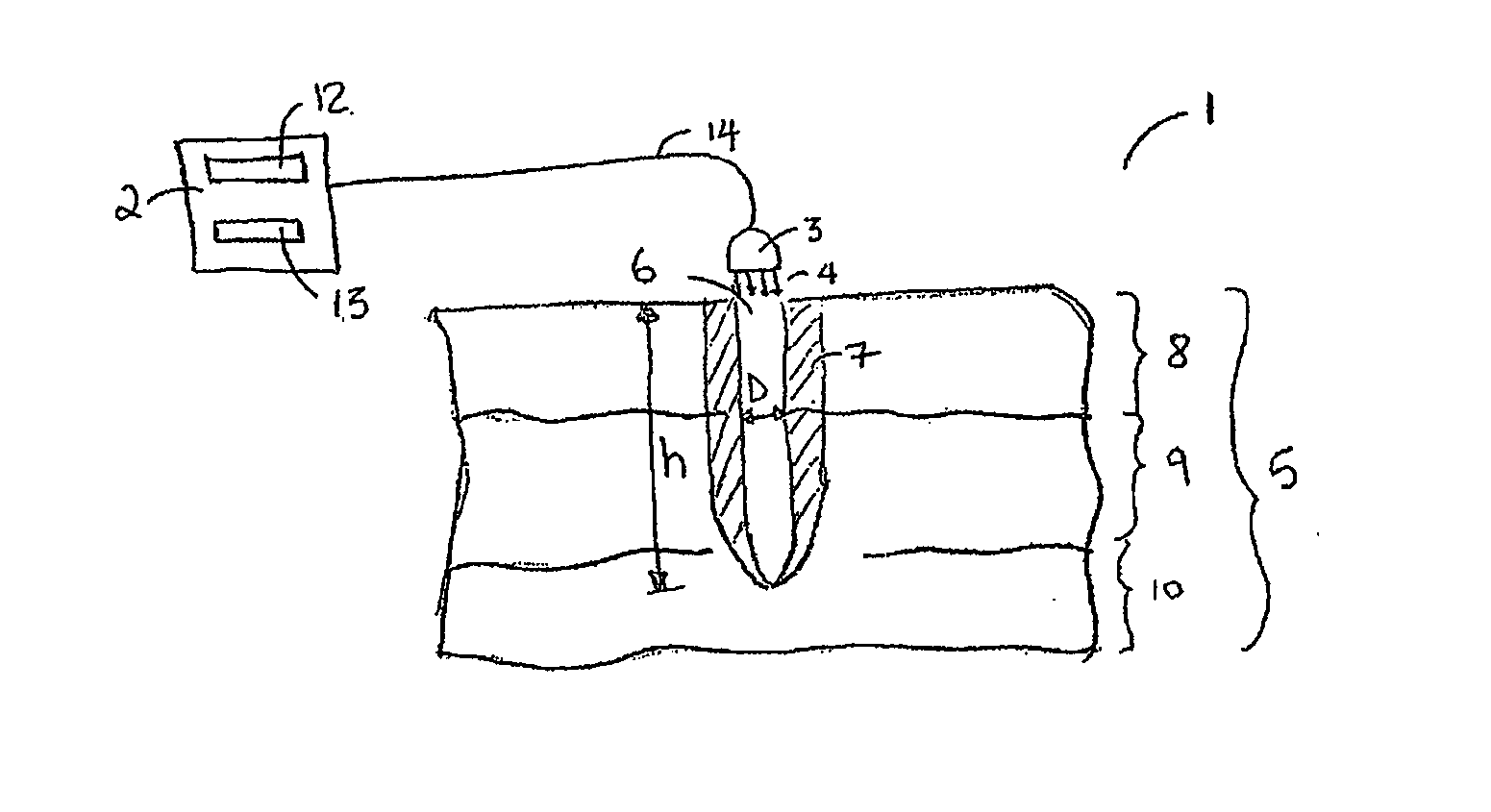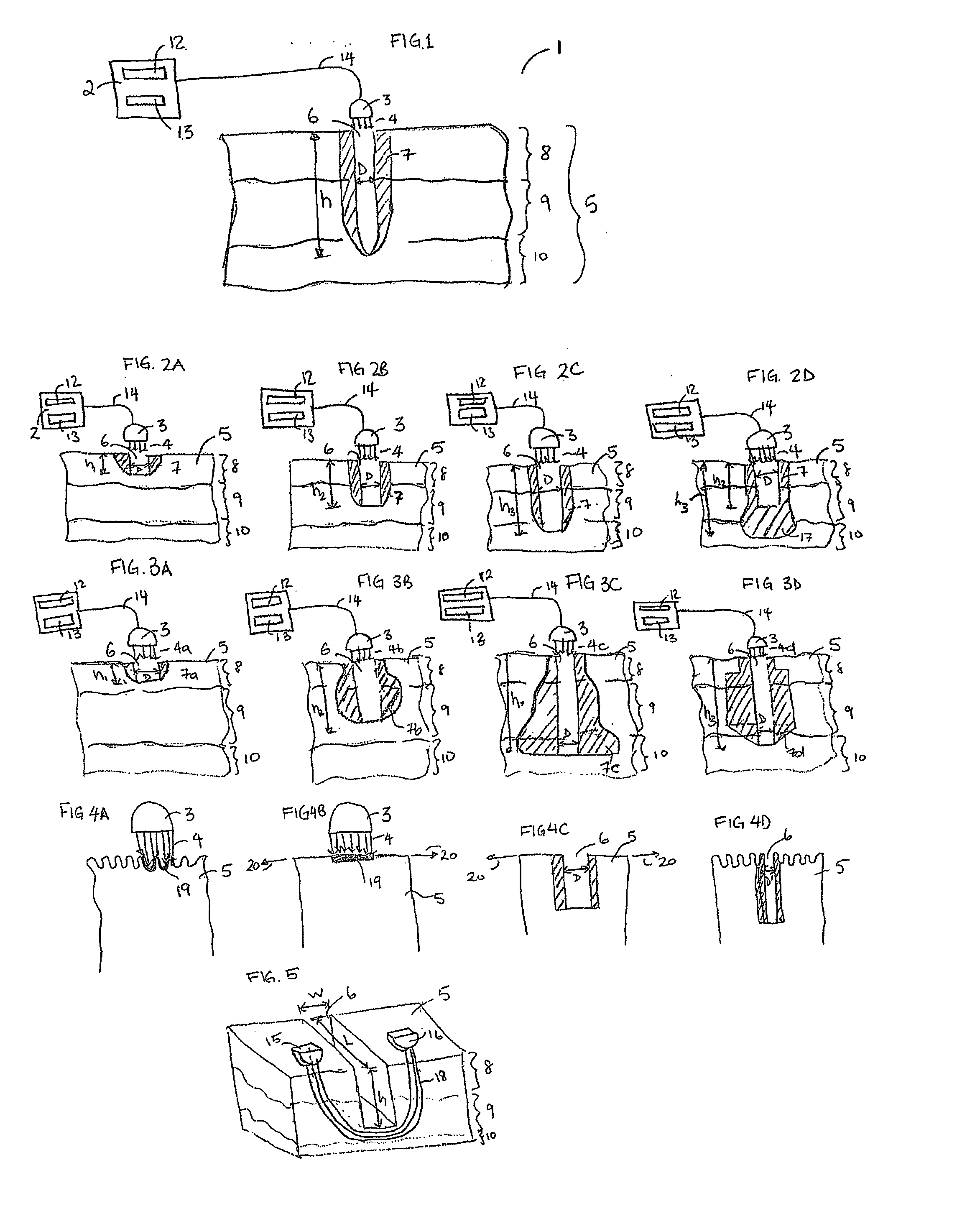System and method for microablation of tissue
a microablation and tissue technology, applied in the field of tissue laser treatment, can solve the problems of inability to treat many patients, inability to achieve the effects of reducing scars, reducing wrinkles, and reducing scars
- Summary
- Abstract
- Description
- Claims
- Application Information
AI Technical Summary
Benefits of technology
Problems solved by technology
Method used
Image
Examples
example
[0056] It is to be understood that the following example of the present invention is not intended to restrict the present invention since many more modifications may be made within the scope of the claims without departing from the spirit thereof.
[0057] A study was conducted that consisted of two research criteria. The first criterion evaluated different laser energy doses on 47 consecutive samples of skin. The doses ranged from 5 m.T to 200 mJ. The width and depth of the ablated “column” was measured as well as the surrounding width and depth of necrosis. The second criterion compared the effects of doses ranging from 5 mJ to 20 mJ on the arms of selected volunteers. These evaluations were recorded immediately after the firing of the laser; at one hour; one day and four days.
[0058] Summary of Results or Findings
[0059] The depth and diameter of the ablated columns correlated in a linear fashion with the dose. The column depth could be directly controlled and ranged from 180 to 13...
PUM
 Login to View More
Login to View More Abstract
Description
Claims
Application Information
 Login to View More
Login to View More - R&D
- Intellectual Property
- Life Sciences
- Materials
- Tech Scout
- Unparalleled Data Quality
- Higher Quality Content
- 60% Fewer Hallucinations
Browse by: Latest US Patents, China's latest patents, Technical Efficacy Thesaurus, Application Domain, Technology Topic, Popular Technical Reports.
© 2025 PatSnap. All rights reserved.Legal|Privacy policy|Modern Slavery Act Transparency Statement|Sitemap|About US| Contact US: help@patsnap.com



